The quality of maximum likelihood estimates of ion channel rate constants
- PMID: 12562901
- PMCID: PMC2342730
- DOI: 10.1113/jphysiol.2002.034165
The quality of maximum likelihood estimates of ion channel rate constants
Abstract
Properties of maximum likelihood estimators of rate constants for channel mechanisms are investigated, to see what can and cannot be inferred from experimental results. The implementation of the HJCFIT method is described; it maximises the likelihood of an entire sequence of apparent open and shut times, with the rate constants in a specified reaction mechanism as free parameters. The exact method for missed brief events is used. Several methods for testing the quality of the fit are described. The distributions of rate constants, and correlations between them, are investigated by doing sets of 1000 fits to simulated experiments. In a standard nicotinic receptor mechanism, all nine free rate constants can be estimated even from one single channel recording, as long as the two binding sites are independent, even when the number of channels in the patch is not known. The estimates of rate constants that apply to diliganded channels are robust; good estimates can be obtained even with erroneous assumptions (e.g. about the value of a fixed rate constant or the independence of sites). Rate constants that require distinction between the two sites are less robust, and require that an EC50 be specified, or that records at two concentrations be fitted simultaneously. Despite the complexity of the problem, it appears that there exist two solutions with very similar likelihoods, as in the simplest case. The hazards that result from this, and from the strong positive correlation between estimates of opening and shutting rates, are discussed.
Figures
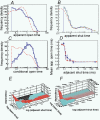
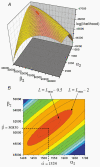

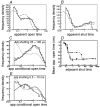
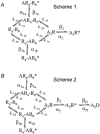
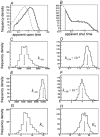


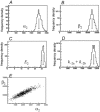
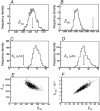
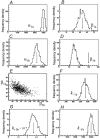
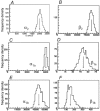


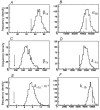




Similar articles
-
Properties of the human muscle nicotinic receptor, and of the slow-channel myasthenic syndrome mutant epsilonL221F, inferred from maximum likelihood fits.J Physiol. 2003 Mar 15;547(Pt 3):729-60. doi: 10.1113/jphysiol.2002.034173. Epub 2003 Jan 24. J Physiol. 2003. PMID: 12562900 Free PMC article.
-
Improved resolution of single channel dwell times reveals mechanisms of binding, priming, and gating in muscle AChR.J Gen Physiol. 2016 Jul;148(1):43-63. doi: 10.1085/jgp.201611584. J Gen Physiol. 2016. PMID: 27353445 Free PMC article.
-
The long activations of α2 glycine channels can be described by a mechanism with reaction intermediates ("flip").J Gen Physiol. 2011 Feb;137(2):197-216. doi: 10.1085/jgp.201010521. J Gen Physiol. 2011. PMID: 21282399 Free PMC article.
-
Reliability of maximum number of simultaneously open channels as an estimator for the number of channels in single-channel recordings.J Theor Biol. 1995 Mar 7;173(1):61-5. doi: 10.1006/jtbi.1995.0043. J Theor Biol. 1995. PMID: 7537835
-
Acetylcholine receptors, between closed and open.Novartis Found Symp. 2002;245:223-34; discussion 234-9, 261-4. Novartis Found Symp. 2002. PMID: 12027011 Review.
Cited by
-
Efficient maximum likelihood estimation of kinetic rate constants from macroscopic currents.PLoS One. 2011;6(12):e29731. doi: 10.1371/journal.pone.0029731. Epub 2011 Dec 29. PLoS One. 2011. PMID: 22242142 Free PMC article.
-
Mechanism of pore opening in the calcium-activated chloride channel TMEM16A.Nat Commun. 2021 Feb 4;12(1):786. doi: 10.1038/s41467-020-20788-8. Nat Commun. 2021. PMID: 33542228 Free PMC article.
-
Estimating binding affinities of the nicotinic receptor for low-efficacy ligands using mixtures of agonists and two-dimensional concentration-response relationships.J Gen Physiol. 2006 Jun;127(6):719-35. doi: 10.1085/jgp.200509438. J Gen Physiol. 2006. PMID: 16735756 Free PMC article.
-
In praise of single channel kinetics.J Gen Physiol. 2016 Aug;148(2):79-88. doi: 10.1085/jgp.201611649. Epub 2016 Jul 18. J Gen Physiol. 2016. PMID: 27432998 Free PMC article. No abstract available.
-
Statistical evaluation of ion-channel gating models based on distributions of log-likelihood ratios.Biophys J. 2006 May 15;90(10):3523-45. doi: 10.1529/biophysj.105.075135. Epub 2006 Feb 3. Biophys J. 2006. PMID: 16461404 Free PMC article.
References
-
- Ball FG, Davies SS, Sansom MSP. Aggregated Markov processes incorporating time interval omission. Adv Appl Prob. 1988a;20:546–572.
-
- Ball FG, Davies SS, Sansom MS. Single-channel data and missed events: analysis of a two-state Markov model. Proc R Soc Lond B Biol Sci. 1990;242:61–67. - PubMed
-
- Ball FG, Sansom MSP. Ion channel gating mechanisms: model identification and parameter estimation from single channel recordings. Proc R Soc Lond B Biol Sci. 1989;236:385–416. - PubMed
Publication types
MeSH terms
Substances
LinkOut - more resources
Full Text Sources

